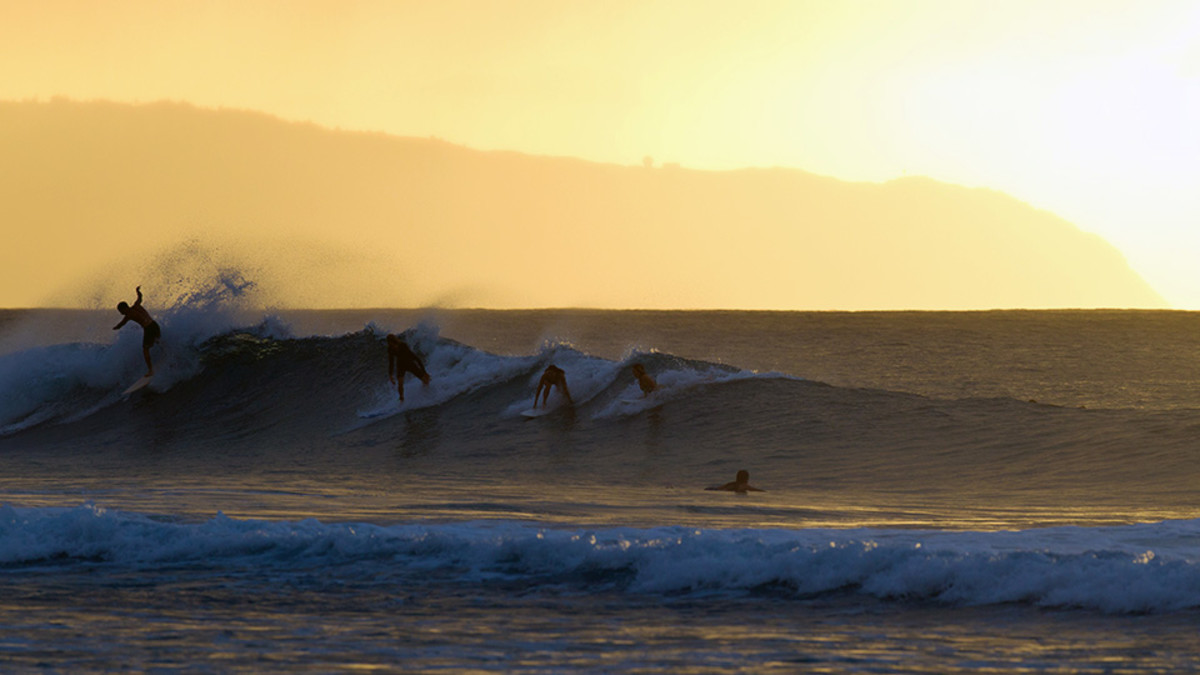
A whole new wave: Extreme Athletics takes surfing training indoors
No longer is surfing simply a lifestyle activity for the average weekender looking to catch a few waves.
Inside a 2,500-square-foot warehouse in Costa Mesa, Calif., Paul Norris and Jonathan Brown are elevating surfing to the level of other highly competitive, mainstream sports with their land-based training methods and programs. The pair had previously trained surfers—Norris has an exercise science degree, Brown has a kinesiology degree—but opened Extreme Athletics in 2012 in order to expand on their individualized programs. Professionals such as Courtney Conlogue and Brett Simpson immediately joined them in Southern California’s first “surf gym.”
“At first a lot of people didn’t know how to take it, didn’t know what we were all about,” says Norris, 34. “It’s not traditional training, we put a different spin on it. We take the mechanics of how the body works and [use] specific exercises that a surfer needs to get results.”
SI Vault: The mystery behind why Kelly Slater still loves the sport of surfing
Extreme Athletics now works with surfers of all ages, from young kids to professionals to weekend warriors, but the focus is the same for everyone: lower-body power and stability, and rotational strength. Norris says the keys are to keep the athletes flexible, agile, mobile and free of injury—prevention exercises are a part of every workout due to the increase risk of ankle and knee injuries related to aerials. While he acknowledges that spending time in the water is vital for top performance, Norris says athletes need a more well-rounded training plan that hones in on the muscle groups and movements that are specific to surfing.
“If you watch a lot of videos of NFL athletes, they’re doing a lot of clean and jerks and really heavy Olympic lifting because they want to be explosive,” Norris says. “Surfers don’t need to be big and bulky and don’t need to carry a ton of mass, but they still need to have that power and agility.”
For professionals or surfers training for a specific event, Norris will “pick apart the type of wave” and tailor an athlete’s program to the water. Each individualized program uses all of the facility’s equipment—kettlebells, dumbbells, Bosu balls, resistance bands and more—in different ways for the varying waves and conditions.
“In Huntington [Beach, Calif.], the waves were chopped up and not smooth and the wave will reform so they can do a few more turns on the inside,” Norris says. “So we’ll focus on leg endurance so they can keep pumping on the wave on the inside.”
A typical session lasts for about an hour, beginning with work on the foam roller for recovery on specific muscles. Bodyweight exercises, rope skipping and running get the heart rate up and lead into a dynamic flexibility warm up, which primes the entire body for the workout with full-range-of-motion exercises, Norris says. The main part of the session includes stability, agility, power and strength training, typically focused on performing on an unbalanced surface.
Extreme Athletics has also struck a deal with suspension training system TRX, which allows Norris to add in single leg exercises and movements that mimic popping up on a surfboard, among other motions. For an athlete using a stability ball, Norris hooks up resistance bands to the wall to work on paddling endurance. When using the battle ropes, he will add an Indo balance board into the mix to create an unbalanced surface.
“We take a single leg squat—foot in the [TRX] strap, elevated and the other on the ground with the front knee bent—and modify it with a balance board or Bosu ball, so the one-legged squat is on an unstable surface,” says Norris. “That’s surf-specific training.
“The thought process is that in surfing, the waves are always changing. You need to be quick on your feet and make sure you’re training in a safe environment so you can push it to the limits in the water.”




